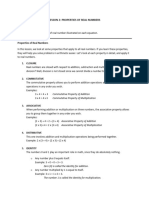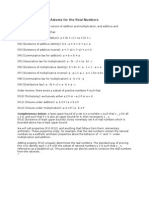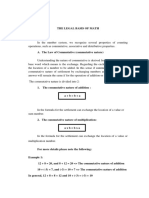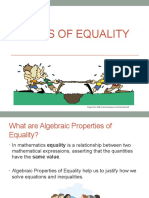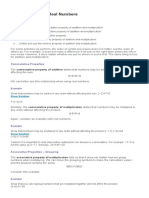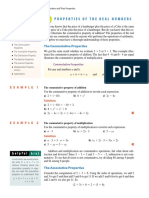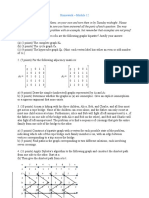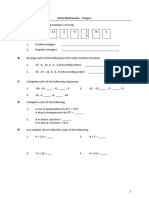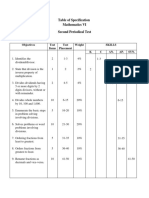0% found this document useful (0 votes)
28 views4 pagesSomething Math
The document outlines key mathematical properties of operations such as commutative, associative, distributive, identity, inverse, and zero properties, which are essential for understanding arithmetic and algebra. It also introduces additional concepts like properties of equality, order of operations, and exponent rules that are encountered in higher math. Mastering these foundational properties is crucial for progressing in mathematics from middle school to more advanced topics.
Uploaded by
mirinammirCopyright
© © All Rights Reserved
We take content rights seriously. If you suspect this is your content, claim it here.
Available Formats
Download as PDF, TXT or read online on Scribd
0% found this document useful (0 votes)
28 views4 pagesSomething Math
The document outlines key mathematical properties of operations such as commutative, associative, distributive, identity, inverse, and zero properties, which are essential for understanding arithmetic and algebra. It also introduces additional concepts like properties of equality, order of operations, and exponent rules that are encountered in higher math. Mastering these foundational properties is crucial for progressing in mathematics from middle school to more advanced topics.
Uploaded by
mirinammirCopyright
© © All Rights Reserved
We take content rights seriously. If you suspect this is your content, claim it here.
Available Formats
Download as PDF, TXT or read online on Scribd
/ 4






